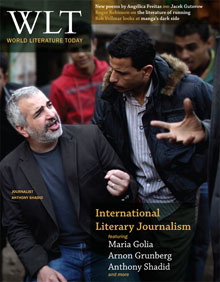The Pest
A group of eminent Malaysian biologists have discovered a new zoological species in southern Spain: the Marbella thief.* In reality, this animal has been sighted in the area for many years and locals have proclaimed its existence repeatedly, but since it eluded apprehension, authorities have considered it a more or less mythical creature. Now, after its successful capture by the Malaysians, they have verified that the insect exists and that there are abundant examples.
The Marbella thief usually manifests a strange tendency toward swollen lips, which biologists are calling mouthy, and an uncontrolled propensity for adorning the body with gold and gilded objects.
The Marbella thief is a sociable beast with seminocturnal tendencies. The male shows a high tendency toward a hairy upper lip and a fat, happy little belly. The female can have blackish-brown hair from birth, but becomes completely blonde by middle age (this mass conversion to blonde hair has not been understood by scientists); at the same time, she usually manifests a strange tendency toward swollen lips, which biologists are calling mouthy, and an uncontrolled propensity for adorning the body with gold and gilded objects. The thief is omnivorous, that is to say, it eats everything, but, to be sure, only the finest of everything, particularly high-quality Iberian dry-cured ham and tiger prawns. It has an inclination toward seafood restaurants, luxury establishments, flamenco clubs, yachts, golf courses, bullrings, and the Rocío pilgrimage. It loves going out on the town and tends to go to bed fairly late. And when leaving the last casino in the wee hours of the night, it tends to let out the self-important and haughty yell of its species, which is a repetitive hiccup that sounds like “hiiic, hiiic, hiiic, hiiic . . .”
The Marbella thief is a bug of uncertain origin. There are examples that hail from the marshes of the right and others from socialist breeding grounds, but then all develop into genuine thieves. Because this is the most frightening characteristic of the beast: its fabulous capacity to swindle, its uncommon instinct for thievery. Always insatiable, it accumulates jewelry, paintings, luxury cars and palaces, and it takes pleasure in keeping huge quantities of money in its house to roll in (the zoologists suppose that it does this to delouse itself). It is a very unreliable animal: be sure not to get too close because it bites.
Translation from the Spanish
By Novia Pagone
Editorial note: This article originally appeared in El País on April 4, 2006, with the title “El bicho” and was later collected in Lo mejor de Rosa Montero (Madrid: Espejo de Tinta, 2006).
Editorial note: To read more about Rosa Montero and other female Spanish journalists, see “Telling Stories in Contemporary Spain: A Survey of Women Writing Literary Journalism” online and in the March print edition of WLT.

